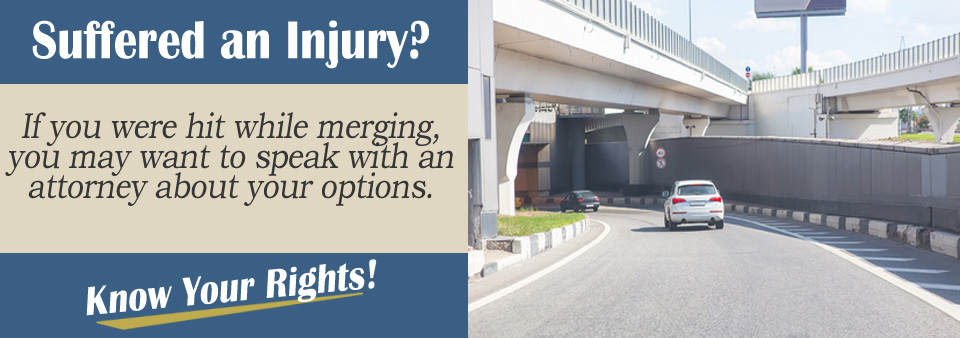Merging accidents are some of the more common types of accidents. They typically occur when vehicles try and merge with faster moving traffic as they enter a highway from a ramp or when changing lanes already on a highway.
Merging drivers must make a calculation about the space they have available and the relative speeds of the vehicles they are merging with.
There are many reasons why some merging drivers fail to make a sensible choice when they execute a merging maneuver and end up causing an accident. Unfortunately, because many merging accidents happen at relatively high speeds, he damage caused to the vehicle involved and the potential injuries may be severe. Compensation should be sought after a merging accident if there is evidence to back up the validity of the claim.
What Types of Damages Can I Collect?
There are two main components of damages that can be claimed after any type of car accident. These are:
- economic damages which are financial losses that are easier to assess and quantify.
- non-economic damages which are less easy to quantify as they are based on more subjective criteria.
Economic damages include:
- loss of earnings such as wages, including estimated future loss of earnings if the injury was serious / long term;
- the cost of medical treatment, including future estimated costs if the injury is likely to take a long time to heal;
- the cost of repairs to a vehicle or a new car if the damaged one is irreparable;
- incidental or out of pocket expenses such as alternative transport costs, court and lawyer’s fees, if relevant.
Non-economic damages include compensation for the pain and suffering caused and possibly punitive damages if the at-fault driver’s negligence was excessive.
Note that the state where the roundabout accident took place matters as medical costs cannot be retrieved in an insurance claim in a no-fault state, unless the injuries incurred were particularly serious.
Gather Information and Evidence About the Merging Accident
Clear proof of fault is vital when making a claim against another driver’s insurance policy. It is common for insurers to reject or challenge a claim unless the evidence presented is sufficient to show who was at fault. Useful evidence after a merging accident includes:
- a copy of the police accident report, especially if there was an injury at the crash site;
- eye witness statements; it is better to take down contact details of other drivers who saw the accident happen or get an audio statement from them if possible (many cell phones come with a voice recorder app);
- photos taken at the scene of the accident.
Contact a PI Lawyer
Some insurance claims are straightforward, but unfortunately a claim for compensation can get held up by an obstructive insurer, even when evidence is presented confirming who was at fault.
If there are any problems with your claim, you should talk to an experienced PI lawyer about your case. Most PI lawyers will defer legal fees until a claim is settled if they think you have a good case against an at-fault driver, even if it means taking the matter to court.
Take our free evaluation today!
